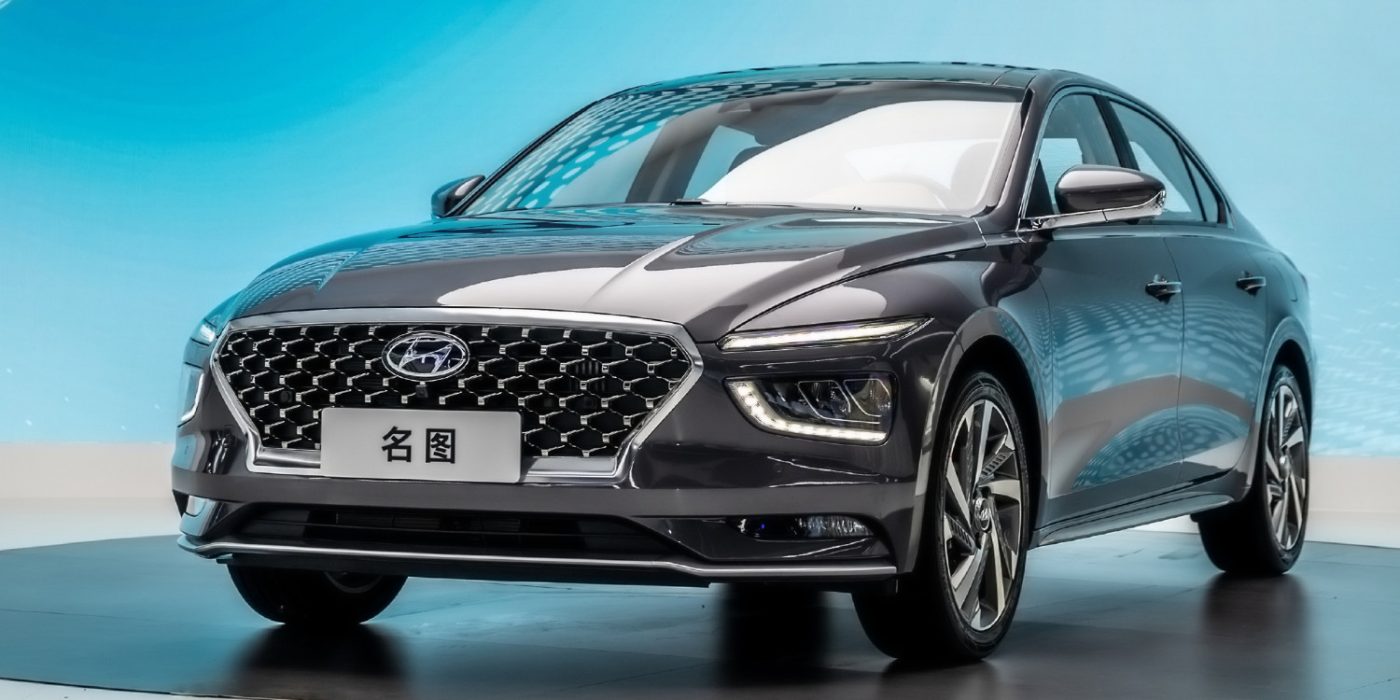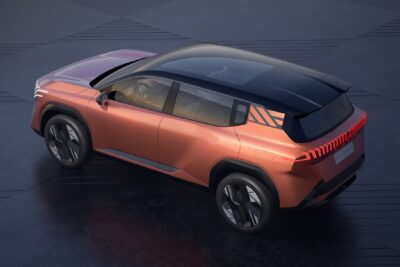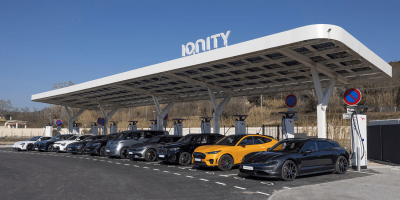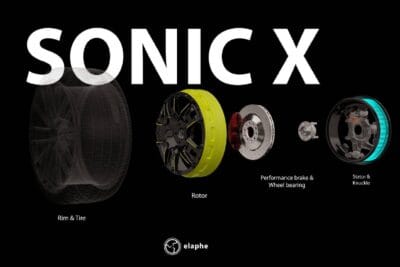Hyundai presents E-GMP electric car platform
Hyundai presented the Electric Global Modular Platform, or E-GMP for short, at a digital event. The platform should form the basis for the Group’s future electric cars and is distinguished by its efficiency.
It has been clear for a while that Hyundai would launch the first vehicle based on E-GMP in 2021. The production car based on the Concept 45 will probably be called Ioniq 5 and will be the first electric Hyundai to be equipped with an 800-volt system.
As the Korean company just announced at a digital presentation, the E-GMP vehicles from the C to E segment are to retain, even improve, an important feature of the existing electric cars Ioniq Electric and Kona Electric: The efficiency of the drive. While other car manufacturers are trying to compensate for the range required by customers mostly by using larger batteries, Hyundai wants to make better use of the available energy so that it doesn’t have to transport such a large storage unit in the first place.
“Hyundai’s front-wheel drive, battery-electric and Kia models are already among the most efficient in their segments,” said Albert Biermann, President and Head of Development for the Hyundai Motor Group. “With the rear-wheel drive-based E-GMP, we are extending our technology leadership to segments where customers expect excellent driving dynamics and outstanding efficiency.”
In principle, the E-GMP is designed as a rear-wheel-drive platform, but can also be equipped with a second electric motor on the front axle. The motors – the power range for most models is to be between 70 and 200 kW – were completely newly developed for the platform. The electric motors are supposed to turn up to 70 per cent faster than those in the current Hyundai BEVs, for which the transmission ratio of the differential was of course adapted. Hyundai expects – you guessed it – better efficiency from the faster rotating engine. In addition, the engines are to be smaller and lighter. The inverters based on silicon carbide are also supposed to work faster and more efficiently.
The newly developed cooling system also contributes to this. The engineers rejected water cooling and instead opted for integrated oil cooling. In the motor itself, the copper windings of the electromagnet were replaced by so-called hairpin windings. Compared to the windings with round copper wire, the Hairpin needles allow more copper to be accommodated in the same installation space. Hyundai speaks of ten per cent more. Hairpin windings in electric cars are not new, but rare. Porsche, for example, has been using the technology in the Taycan’s electric motors. According to Biermann, depending on the model, up to 600 hp, or around 440 kW, should be possible.
Speaking of the Taycan, like the electric Porsche, the Hyundai E-GMP also has a battery system with 800 volts system voltage. This should enable high charging capacities. Hyundai does not mention the actual charging capacity – the Korean company only states that the battery can be charged to 80 per cent in 18 minutes. In principle, the system is designed for up to 300 amperes. With the 800 volts, this results in a theoretically possible 240 kW. It remains to be seen how much of this Hyundai can actually use, and above all how for long when charging.
The maximum range naturally depends on the vehicle and its aerodynamics. In the presentation, Hyundai mentions a range of up to 500 kilometres. A charge of up to 80 per cent would mean that electricity could be recharged for 400 kilometres in 18 minutes. After deducting the usual losses to real consumption, this would still be just over 300 kilometres in those 18 minutes.
Bidirectional AC charging supported
According to Hyundai, it has replaced the classic AC onboard charger with an Integrated Charging Control Unit. This unit will not only enable AC charging with up to 11 kW but will also be designed bi-directionally – also as a vehicle-to-vehicle, i.e. the direct charging of another car. In addition, various voltage algae should be possible – i.e. also for 220-volt sockets in the car.
At the presentation itself, Hyundai only mentions it in passing, but the platform will probably also support wireless charging. In addition to the Hyundai and Kia brands, the premium brand Genesis will also use E-GMP. According to earlier reports, Genesis will also offer an inductive charging system with its first BEV eG80.
The battery itself consists of standardized modules that will be able to accommodate pouch cells from various cell suppliers. Depending on the model, different numbers of modules will be assembled to form a battery. The larger models in the E-segment should be able to accommodate correspondingly large batteries with a wheelbase of over three meters, while fewer modules can be installed in vehicles in the C-segment.
According to previous reports, the Ioniq 5 will receive two battery options of 58 and 73 kWh. At the presentation, however, Hyundai did not specify the range of battery capacities that are possible with E-GMP, even when asked. In the presentation, Hyundai showed a cutaway model with eight modules, which is probably one of the larger models.
Flat interior floor should enable innovative concepts
Even for a cutaway model, it is noticeable that the battery is very flat. When asked, Hyundai gave the length of 130 millimetres for the battery housing. The low centre of gravity and long wheelbase should result in good handling. For the larger models, Hyundai has developed its own five-link rear axle built around the electric motor. The electric four-wheel drive is also intended to increase driving pleasure.
The flat battery should also be reflected in a completely flat interior floor. For this purpose, components such as the air conditioning system have been newly developed. The elimination of the centre tunnel is not only intended to increase the legroom of the occupants, but also to enable new, innovative interior designs. How innovative or conventional the first models will be demonstrated by the Ioniq 5 in early 2021.
Despite the flat battery, safety in the event of an accident is said to have been improved. High-strength steels are used around the battery box. In addition, a new front-impact structure has been developed that extends to the A-pillar. This is supposed to better distribute the energy in the event of a frontal impact, including the “small overlap test”.
Initially, the models are to be built in Korea, according to Biermann, officially Head of R&D Division Hyundai Motor Group. “Depending on market demand, we are also considering regional production,” says the former BMW manager who said that this decision has not yet been made.
By the way, the same applies to the fuel cell: the current FCEV Nexo is on its own platform. The E-GMP is initially designed for battery-electric drives. Whether Hyundai will also integrate the fuel cell, hydrogen tanks and other hydrogen components into the E-GMP is still under investigation.
With reporting by Sebastian Schaal attending live online event





0 Comments